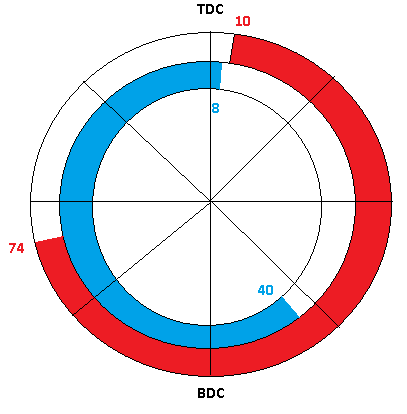pickler
Automotive
- Feb 21, 2013
- 90
I would like to create an Atkinson cycle like behavior for my VVT (both intake and exhaust) enabled 6 cylinder 3.6L Subaru engine. Currently the VVT settings are as such under loads experienced cruising @65mph.
advertised Intake duration 244*
ivo 15* btdc
ivc 49* abdc
intake cam can be advanced or retarded 25* from this
advertised Exhaust duration 228*
evo 24* bbdc
evc 24* atdc
exhaust cam can be retarded or advanced 20* from this
The duration cannot be adjusted however the timings can. How can I change the timings here to induce Atkinson cycle behavior or to effectively reduce dynamic compression and engine displacement? This is obviously to achieve better fuel economy at cruise. I'm also assuming ignition timing needs to be advanced?
My guess would be to retard Intake CAM and Advance Exhaust CAM.
advertised Intake duration 244*
ivo 15* btdc
ivc 49* abdc
intake cam can be advanced or retarded 25* from this
advertised Exhaust duration 228*
evo 24* bbdc
evc 24* atdc
exhaust cam can be retarded or advanced 20* from this
The duration cannot be adjusted however the timings can. How can I change the timings here to induce Atkinson cycle behavior or to effectively reduce dynamic compression and engine displacement? This is obviously to achieve better fuel economy at cruise. I'm also assuming ignition timing needs to be advanced?
My guess would be to retard Intake CAM and Advance Exhaust CAM.



